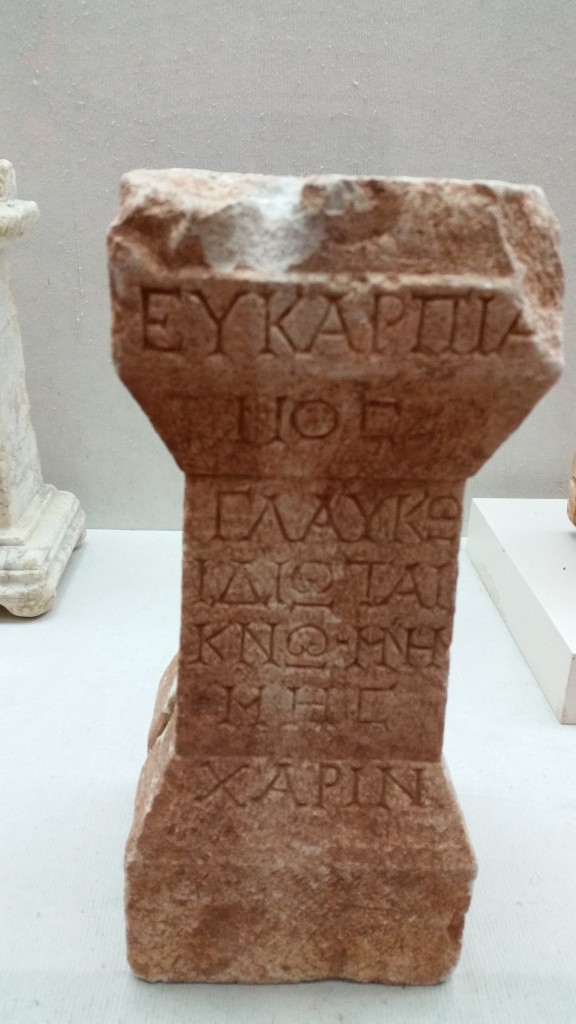The Antalya archaeological museum is a world class museum. Indeed, it has won international awards. It’s basic problem is far too little space. It needs about three more floors. Then perhaps they could bring in the hundreds of artifacts sitting outside on the lawn in all directions into the museum. Nevertheless, this museum in the very heart of a very busy city of over a million which has been dubbed the Turkish Riviera is a major tourist destination, especially in the summer, especially for Germans, other Europeans, and Russians.
As I said, half of Perge is in the Antalya museum, but it also contains remarkable things from Patara and throughout this region. If you are going to visit, set aside some hours, and be prepared to be amazed at the quality and variety especially of the statuary and the sarcophagii. So let’s start with an item that will make you smile…
Here is an uber small sarcophagus….. of Rhodope’s dog, Stephanos!!

Here’s the inscription…
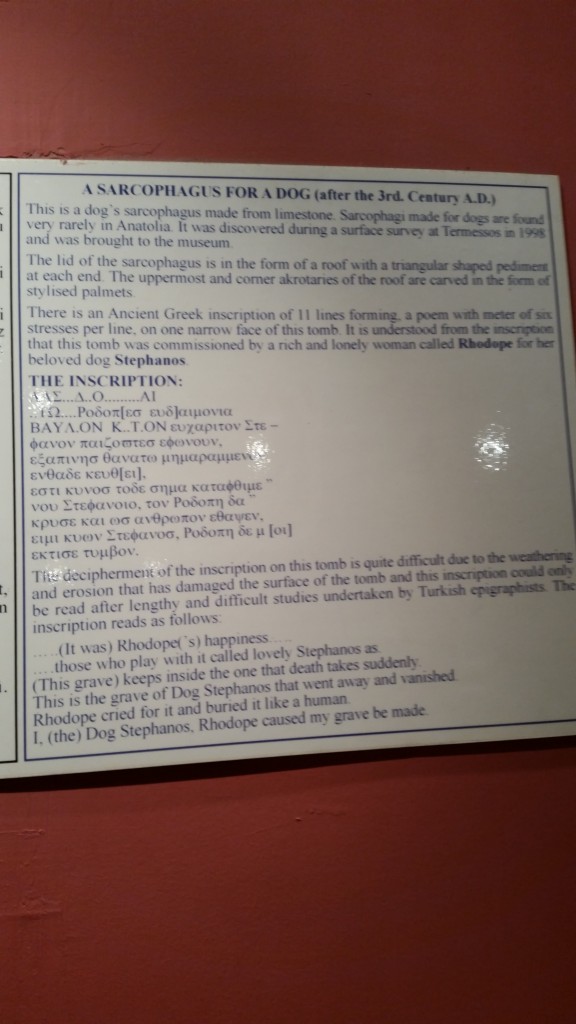
If this museum has this in it, anything is possible. There are of course many other much more impressive, very impressive sarcophagi from the Greco-Roman era both inside and outside the museum…. for instance….

You have to ask how a farmer, with two oxen, could afford a tomb like this??
Here’s a more conventional one…. notice the bread on the table, either signifying an offering, or perhaps the profession of the husband…. was he a baker?
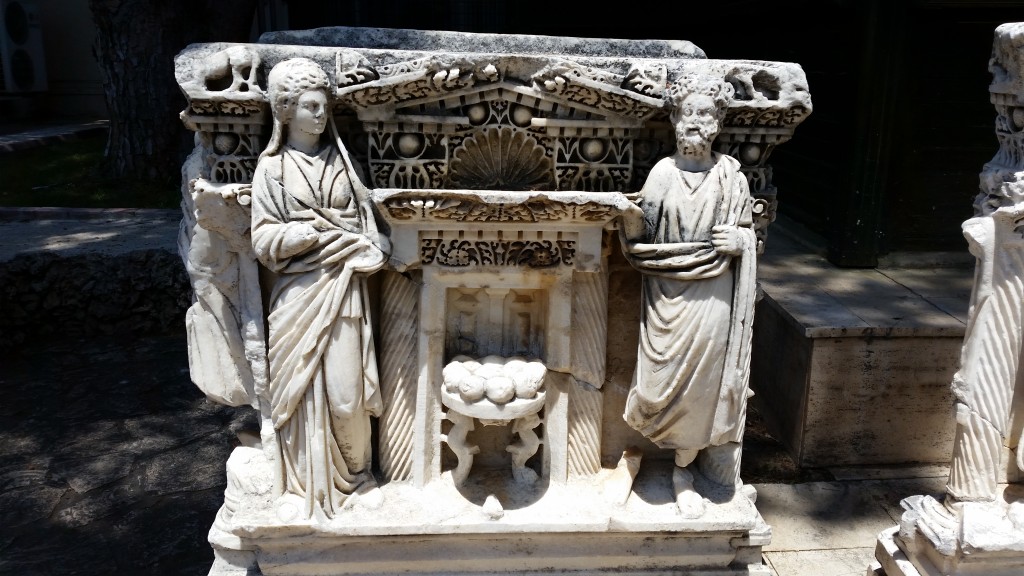
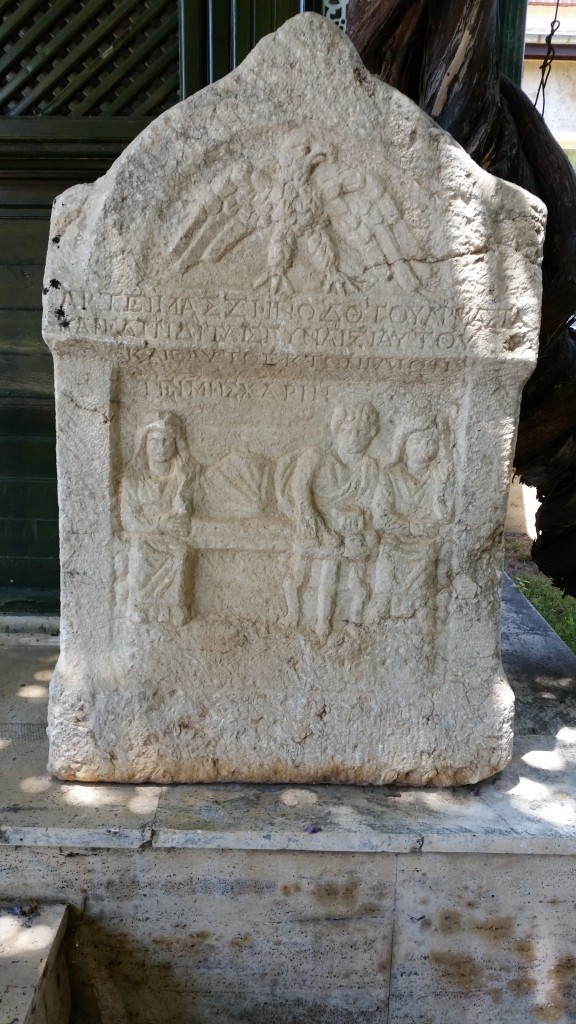
Let’s go back inside where it is much cooler.
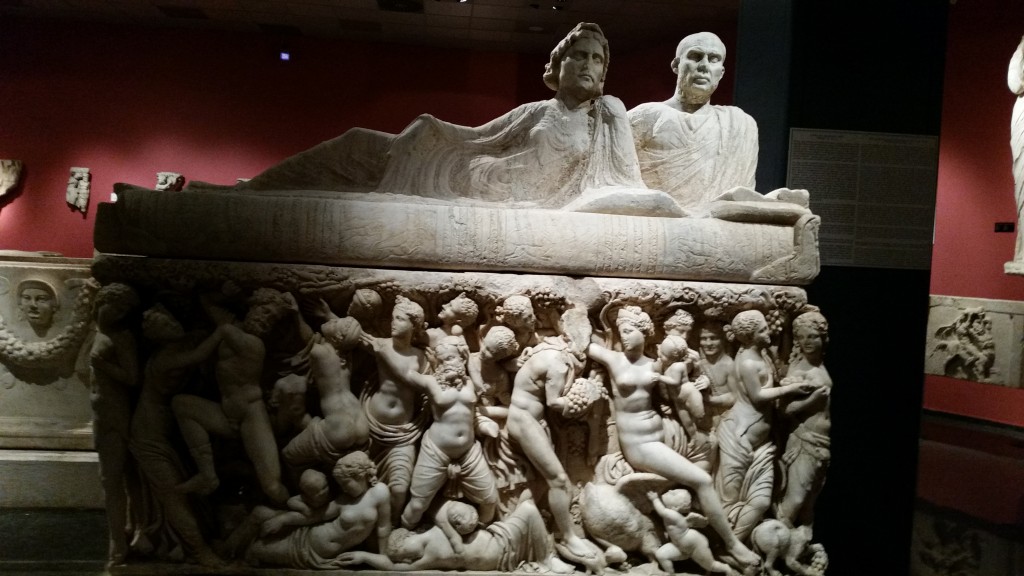
Here you have both the husband and the wife on the sarcophagus. And here you have a classic and typical motif…
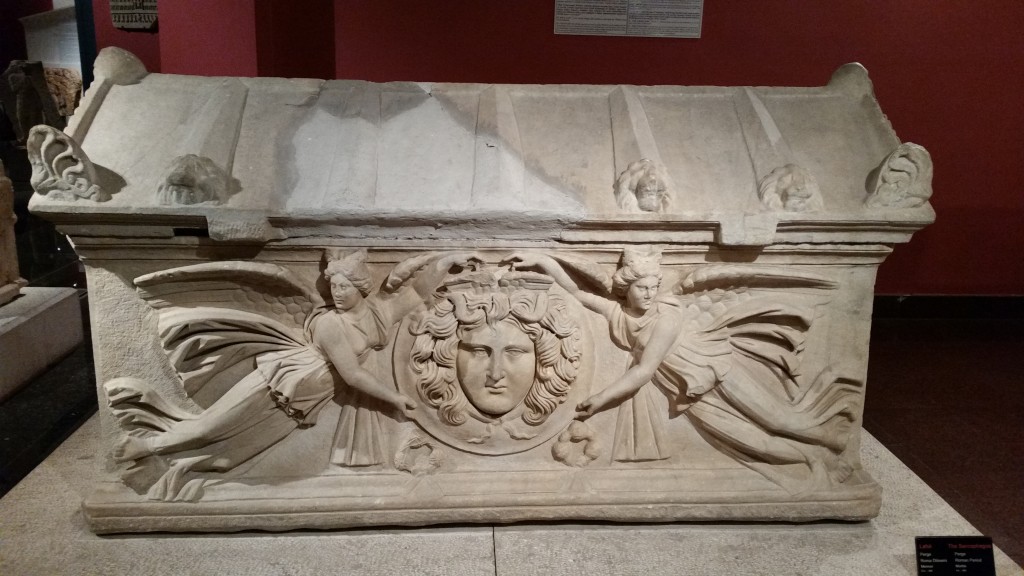
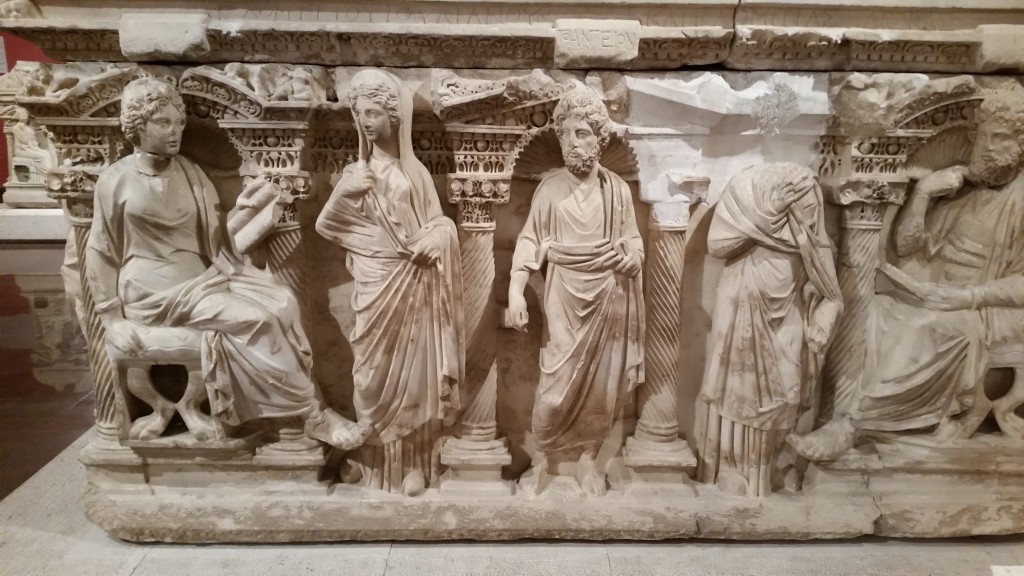
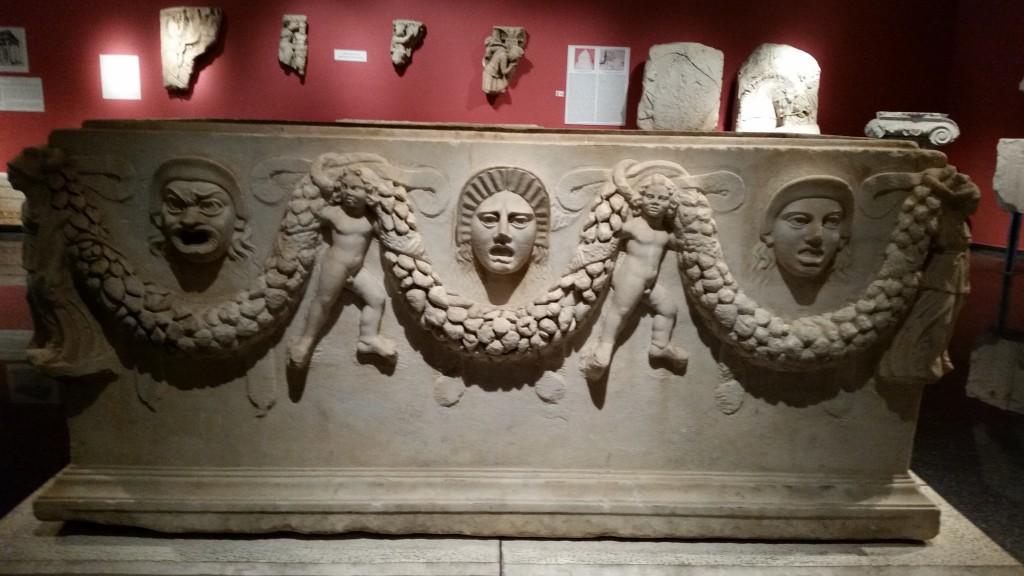
And here is the sarcophagus of a champion, found in Patara, and dating to the 3rd century A.D. Those are not barrels, those are shields won at tournaments with the named cities on the shields..
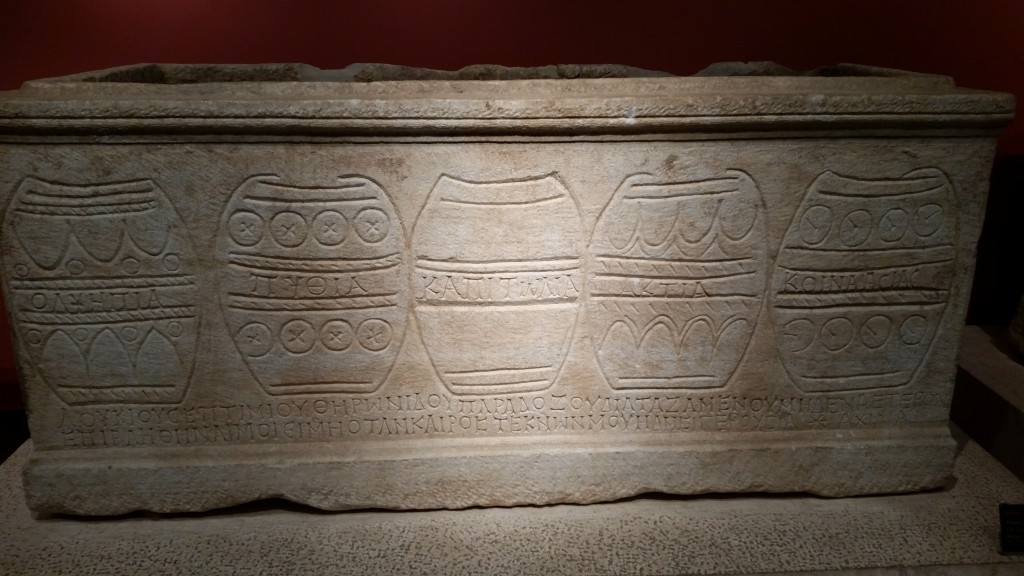
Here’s the famous griffin dragon on a sarcophagus…
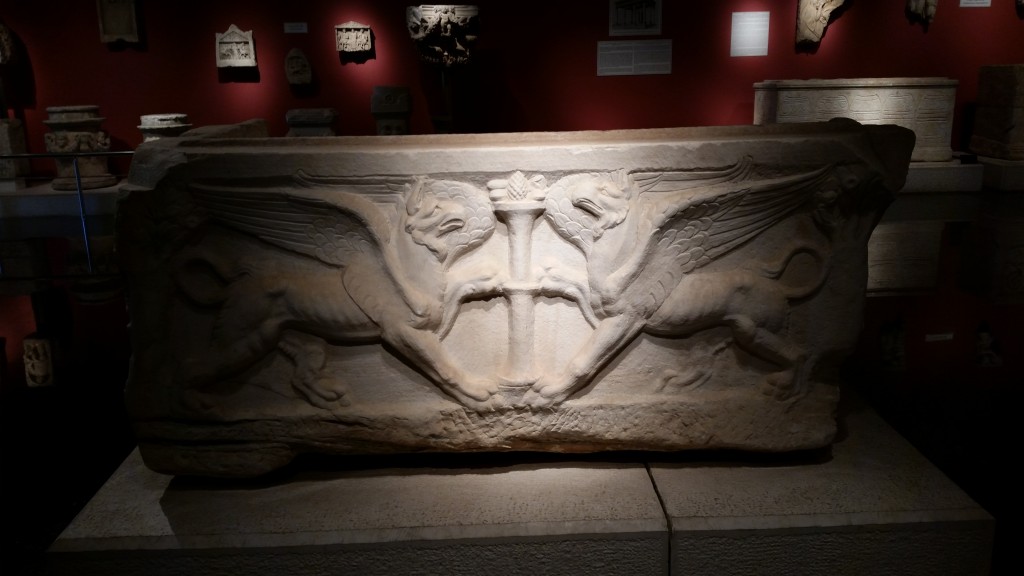
Here is one of the most important recent additions to the museum, a menorah plaque from a synagogue in Adrianake, the port of Myra… dating from perhaps as late as the 4th century A.D.

Notice both the shofar (ceremonial horn) and the torch or flame as well.

There is some ancient beautiful glass displayed as well…

The artisan skill of carving marble is beautifully demonstrated in this statue of Venus/Aphrodite from Perge, carved from fine grain white marble and dating to the 2nd century A.D.

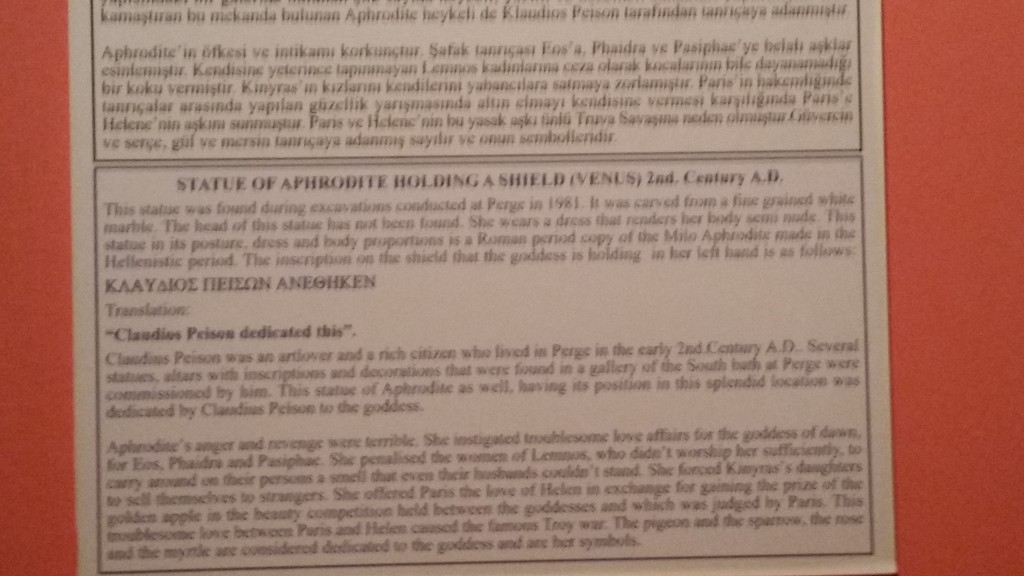
Here is a nice schematic and explanation about the cutting, carving and transporting of marble, which of course was used as building material as well as for fine art statuary or sarcophagi etc.
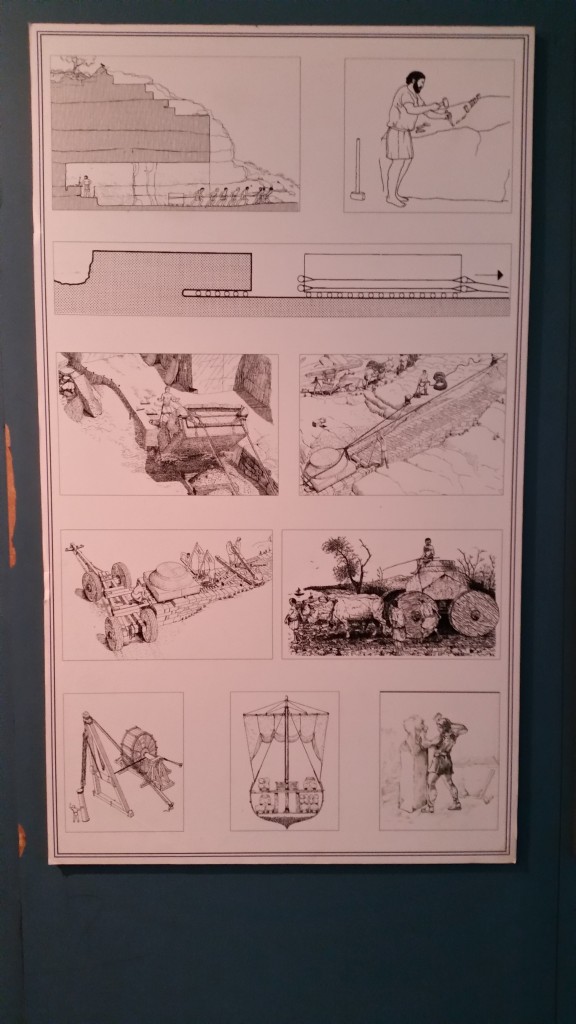
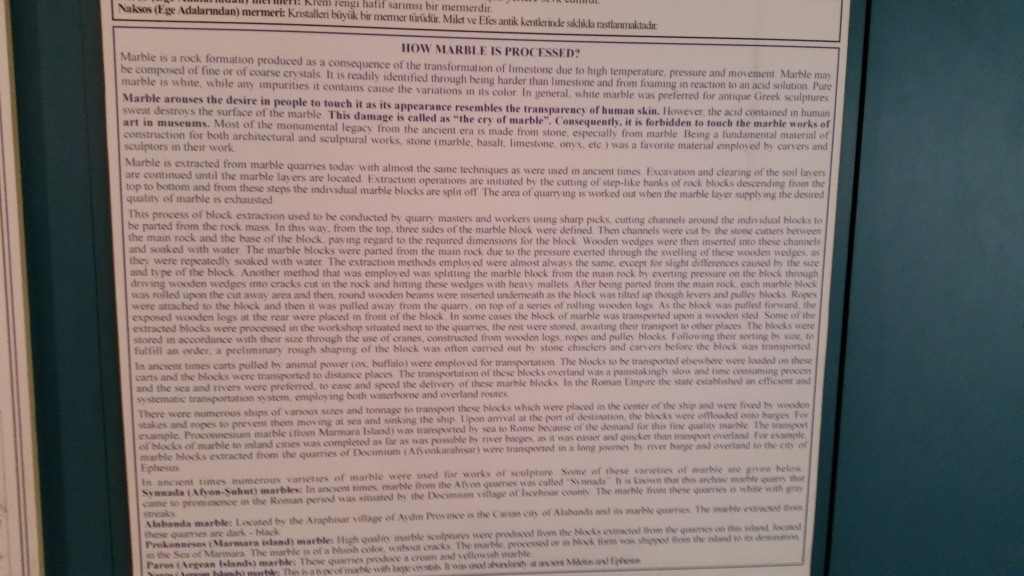
From the honoring of the dead, to the honoring of the living, we come to busts and shrines of various sorts… see if you can tell which is more influenced by Greek idealism, and which by Roman realism, realistic depictions…


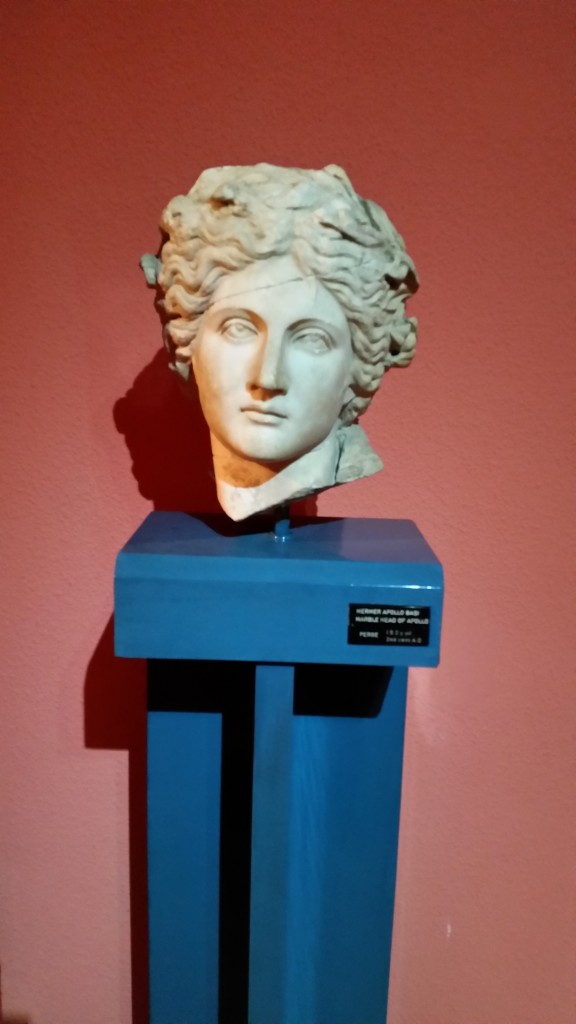
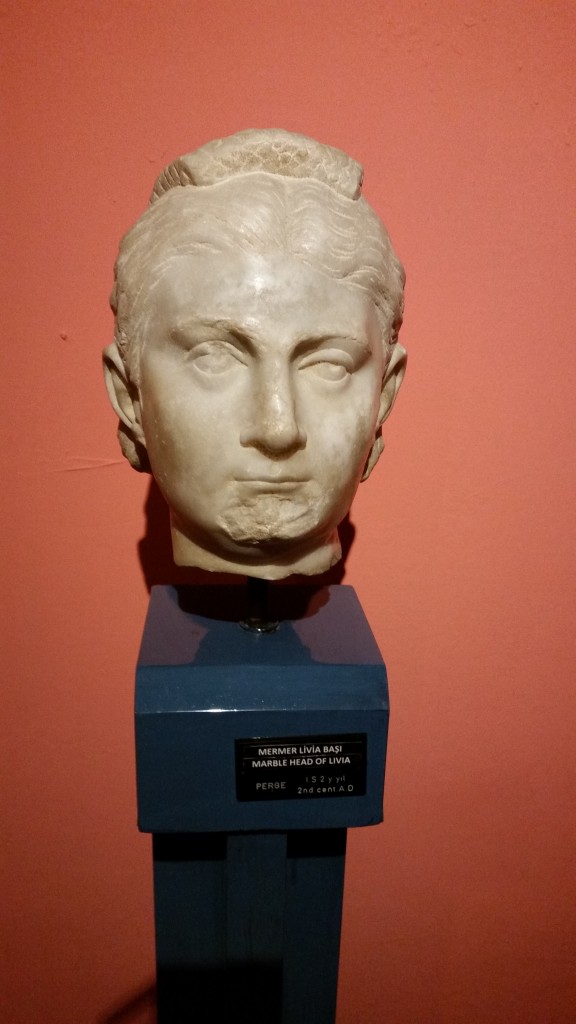
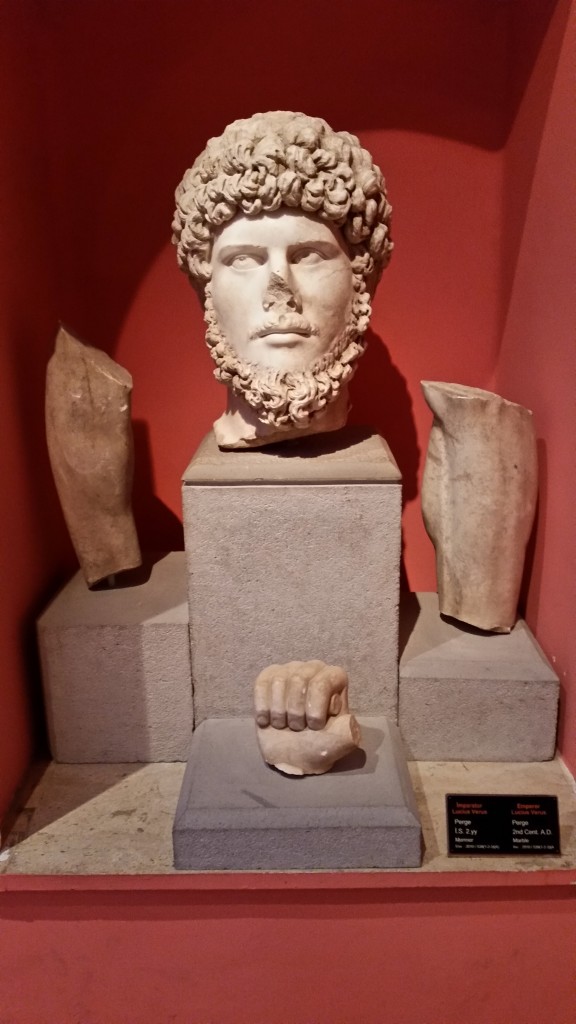

Perhaps we should ask this matron what counts as true beauty? Or perhaps an emperor, or this gladiator?

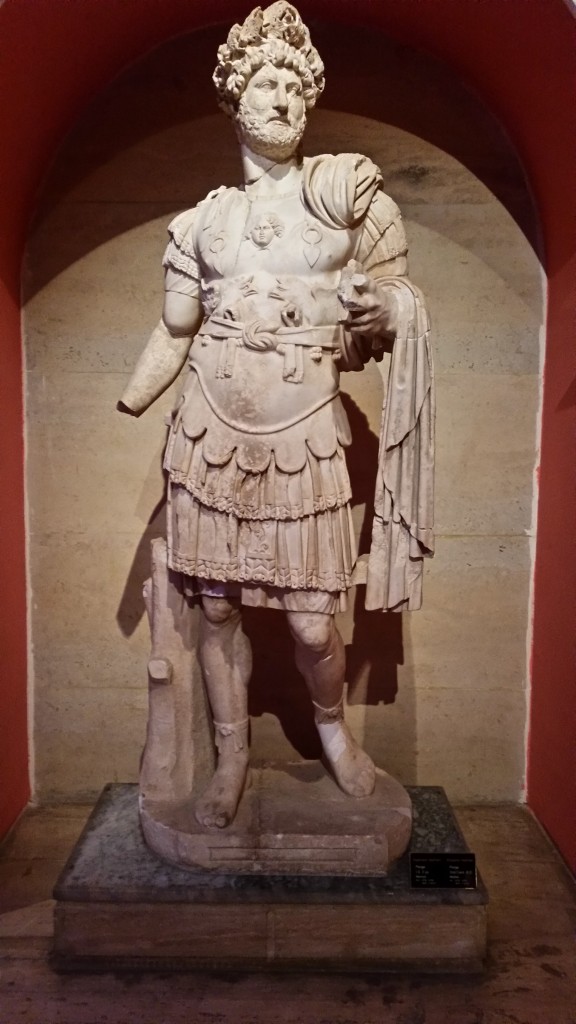
Finally, let us consider some of the smallest objects in the museum. Small shrines, small votive altars, small statues of favorite deities etc. Think of the silversmith in Ephesos and what he made. Shrines were sometimes souvenirs from a trip to a temple, but in the case of healing gods, one might make an offering to the deity of one of these little objects, in hopes of healing.


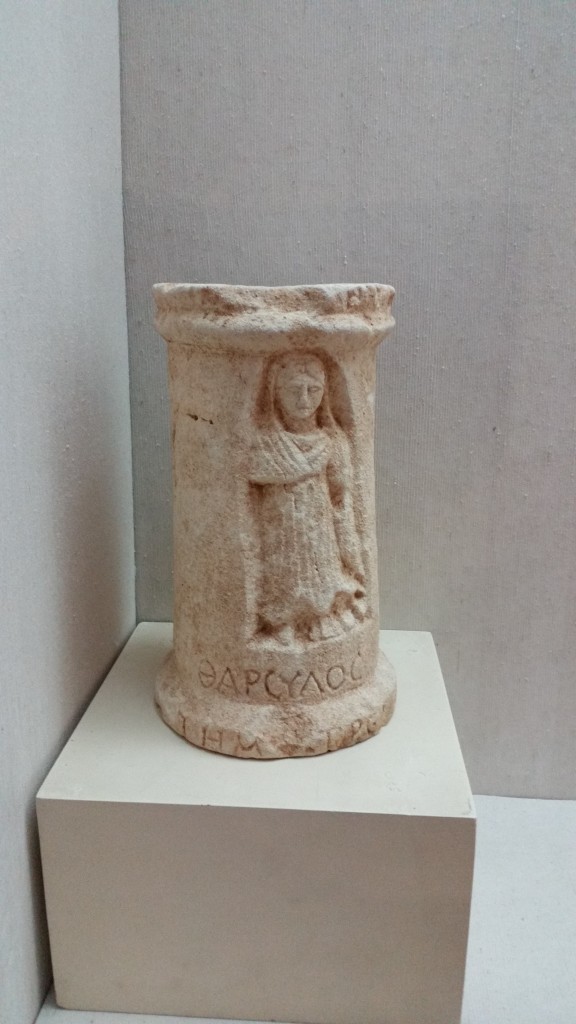

Can you pick out the small statue of Artemis from this last picture?
Here are two little altars of interest the first depicts the Dioskoroi, which the website theoi.com gives us a nice summary (though not in perfect English) about….
“THE DIOSKOUROI (or Dioscuri) were twin star-crowned gods whose appearance (in the form of St Elmo’s fire) on the rigging of a ships was believed to portent escape from a storm. They were also gods of horsemanship and protectors of guests and travellers.
The twins were born as mortal princes, sons of the Spartan queen Leda, one being fathered by Zeus the other by her husband Tyndareus. Because of their generosity and kindness to man they were apotheosed into gods at death. At first Polydeukes alone, being a son of Zeus, was offered this gift, but he agreed only on condition that his half-twin Kastor share the honour. Zeus assented, but the pair had to spend alternate days in Hades to appease the Fates and the Gods of the Dead.
The Dioskouroi also received a place amongst the stars as the Constellation Gemini (the Twins). Their alternations between heaven and Hades may refer to the heavenly cycles – their constellation being visible in the heavens for only six months of the year.
The Dioskouroi were depicted as beardless youths, horsemen wearing wide-brimmed hats.
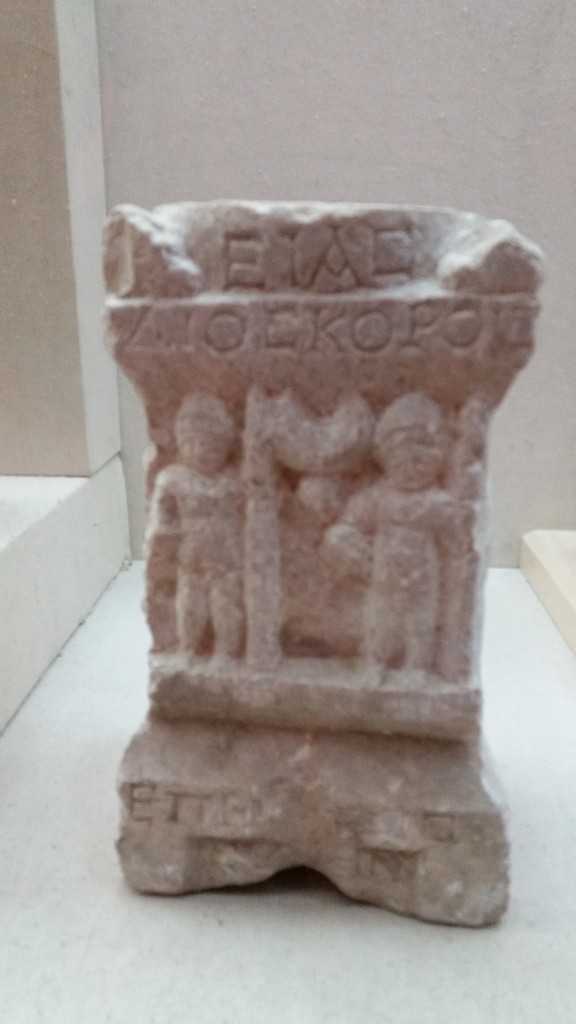
This last one might even be Christian, but probably not. It’s last word is Charis… grace, not Xaipe as in greetings or farewell. It also has the word idiotai— (see 1 Cor. 14) which means the uninitiated or ignorant. It came to mean those who were proselytes or ‘newbies’ on the way to becoming converts.
